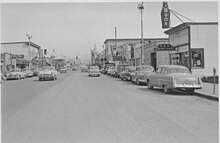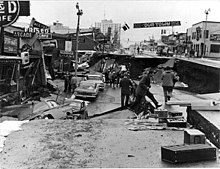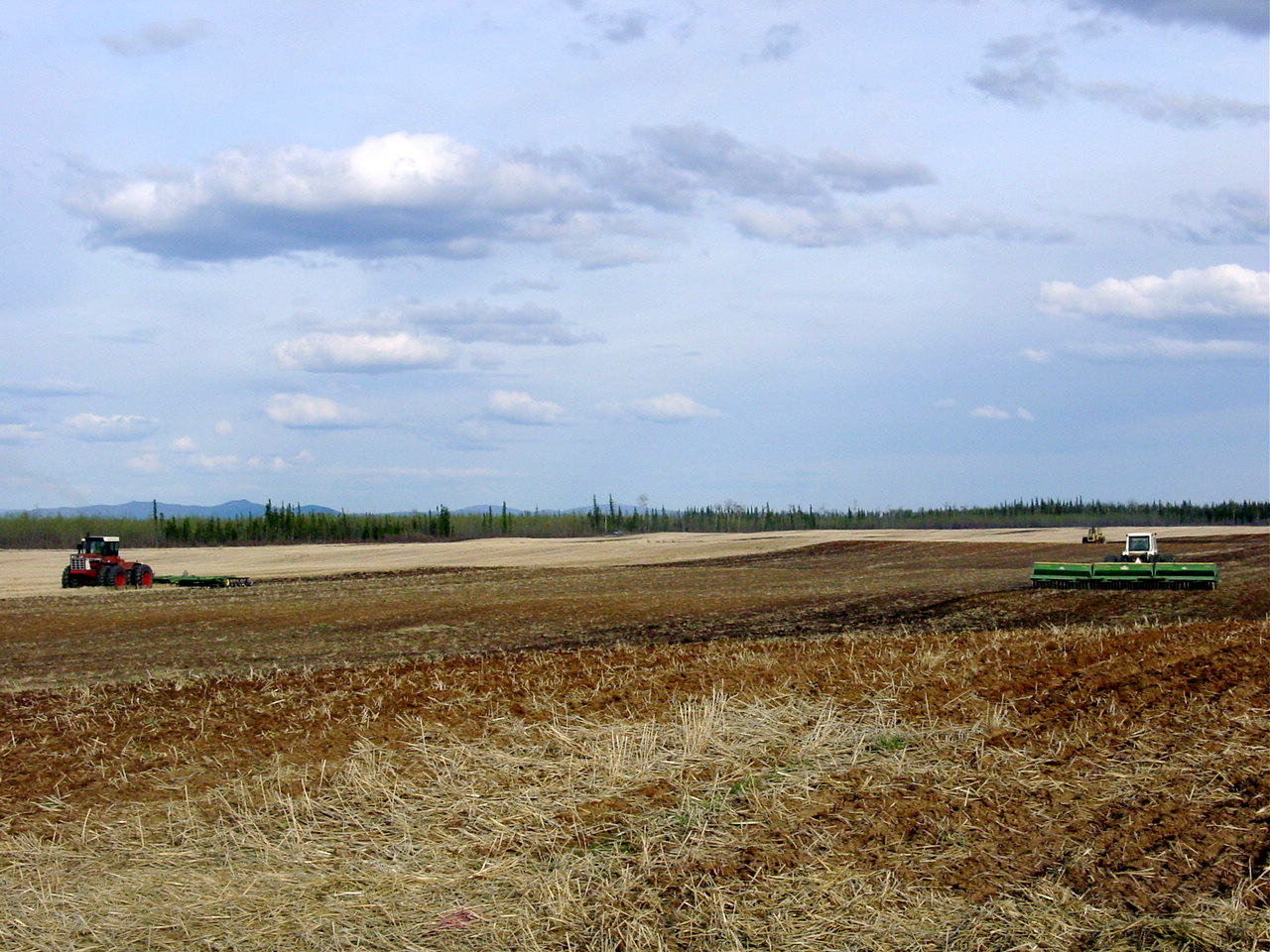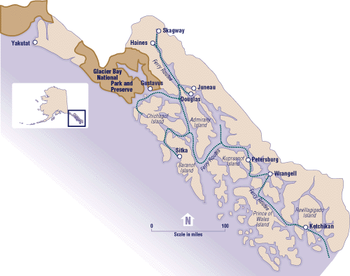In July 1867, shortly after Congress ratified the treaty to purchase Alaska, more than 30 ships sailed from San Francisco to Alaska. Most went to the Russian center at Sitka, a few to trading posts at Wrangell, Kodiak, Kenai and Unalaska, St. Michael and the Pribilof Islands. Those heading north wanted to engage in trade and commerce, to exploit Alaska's natural resources, or they went because the government sent them.
The U.S. Government did what it usually did after acquiring new territory. It classified Alaska as "Indian country" and sent the U.S. Army to the territory. The Army built posts at Sitka, Kodiak, Kenai, Wrangell, Tongass Island, and the Pribilof Islands. The posts were expensive to operate and staff. The Army closed all but the Sitka post by 1870. Other departments of government sent officials to Alaska. The Treasury Department sent customs collectors and revenue marine service vessels to collect taxes and enforce laws against smuggling. The U.S. Navy sent ships to support the Army.
For the first dozen years of U.S. administration of Alaska, Americans had a small number of government personnel living in a few widely isolated outposts, supported by Navy and Treasury Department ships, a small year-round civilian non-Native population, and a seasonal increase in laborers.. In 1880, the U.S. Census Office appointed Ivan Petroff to take the first American census of Alaska. It was impossible for him to visit every part of Alaska, but he visited Cook Inlet, Kodiak Island, the Alaska Peninsula, some Aleutian Islands, part of the Bering Sea coast, and the lower portions of the Yukon and Kuskowkim rivers. He counted 33,426 people, 430 non-Native, 1,756 Creole, and almost 33,000 Native. His report provided a great deal of information about Alaska's geography and resources.
The discovery of gold in Canada's Klondike attracted thousands of people to Alaska. Between 1890 and 1900, the population of Alaska nearly doubled, to about 63,000 people. Most of the people who came north planned to strike it rich and leave.. Some people did stay however. In 1910, the census report count was 64,356 people in Alaska. Forty years later the population almost doubled to 128,643 people.
During the early 1900s, most Alaskans lived near the ocean or along major rivers where ships and boats could provide supplies and transportation. Later, communities grew up next to railroads and roads, and still later, to airfields. Some of the American settlements came to be because of resources, such as minerals, that could be economically developed. People in these communities petitioned the government for trails and roads, and tried to get railroads built to connect them with others and to lower freight and transportation costs.
Before the Klondike gold rush of 1898, Americans started a number of new settlements around Alaska. Juneau began as a mining camp in 1880, and Douglas, across the channel, was founded a year later. Hope on the Kenai Peninsula, Circle City on the middle Yukon River, and Council on the Seward Peninsula started as mining camps before 1898. Several towns like Ketchikan began as fishing villages or as cannery sites like Karluk on Kodiak Island and Homer on the Kenai Peninsula. Others started as mission stations, such as Haines and Bethel. In Northwest Alaska, whalers and traders established shore-based whaling stations at Barrow and Wainwright.
In the mining areas, large corporations moved in after the initial stampede. The big companies purchased claims, brought in drag lines, hydraulic equipment and dredges, and hired large crews to work. These companies, at places such as the Treadwell gold mines at Douglas and the Kennecott copper mines in the Wrangell Mountains, established company towns. The company owned the land and constructed boarding houses, dormitories, mining offices, and other community buildings. Workers paid room and board. The company offered bowling alleys, gymnasiums, movies, and reading rooms.
The gold discoveries and people rushing north led the U.S. Army to return to Alaska and establish six posts to maintain order. These posts were complete communities. Around the posts, communities grew, providing goods and services.When the posts were closed down, the local communities declined. This same pattern occurred during and after World War II and the Cold War.
Starting construction in 1900, the U.S. Army built Alaska's first significant road and a telegraph system. The Trans-Alaska Military Road went from Valdez north and east to Fort Egbert, the army's headquarters near Eagle on the Yukon. The Army constructed a 1,900 mile long telegraph to connect the six army posts. Along the telegraph routes, small communities grew around telegraph stations and roadhouses were built to serve workers and travelers, including the U.S. mail carriers.
Several private companies built railroads after the gold discoveries. Seward was founded as the southern end for a road that would cross the Kenai Peninsula and then head north to Fairbanks. Cordova was the seaport end for the railroad to bring the rich Kennecott copper out of the Wrangell Mountains. Stations along these routes grew into small towns.
When the U.S. Government built the Alaska Railroad between 1915 and 1923, it encouraged communities along its route. Anchorage began as the southern railroad construction camp. Nenana was the main construction camp for the northern section of the railroad. It was also the home port for the steamboats that the railroad operated to serve communities on the Tanana and Yukon rivers. The railroad surveyed townsites and sold lots at Anchorage and Nenana, Wasilla and Talkeetna.
The gold rush era ended about 1912. The population of the territory declined and when the U.S. entered World War I, more people left Alaska. The population in 1920 was recorded as 55,036. That census was the first to report more non-Natives than Natives in the territory. Alaska's population did not significantly increase again until World War II. Then large naval stations opened at Sitka, Kodiak, and Unalaska and large army posts opened at Fairbanks and Anchorage. Air fields were constructed on Annette Island, at Yakutat, Galena, Gulkana and Bettles. The Glenn and Alaska highways were built.
A number of soldiers and construction workers decided to live in Alaska after the war. There were many job opportunities. The military started to build communication sites around Alaska to provide early warning of planes from the Soviet Union heading for the 48 states. It was part of the defense for the Cold War.
Most of the people who moved to Alaska after World War II settled in larger communities. Many rural Alaskans moved to the cities as well, for jobs and better access to goods and services. The Anchorage area grew the most.
In the late 1950s, oil was discovered on the northern Kenai Peninsula and in Cook Inlet. Then the largest oil field in North America, at Prudhoe Bay, was discovered in 1967. During the 1970s, the population of Alaska nearly doubled. People came to work in the oil fields, to build the Trans-Alaska Pipeline, and to provide services to the workers. The communities of Anchorage, Fairbanks, and Valdez could not house all the people arriving. Eagle River and the Matanuska Valley grew as Anchorage suburban areas, as did North Pole and Ester, outside of Fairbanks.
Alaska's population was counted as 626,932 in 2000. Of this total, 98,043 are Natives. They are 17% of the population. That year, Alaska was no longer the state with smallest population. It does have the fewest people per square mile. Over half of the state's population lives in the Southcentral area. The state's population is more ethnically diverse than it was 25 years ago. The number of African Americans has increased, as has that of Asians, Pacific Islanders, and Hispanics. (http://www.akhistorycourse.org/articles/article.php?artID=231)


































